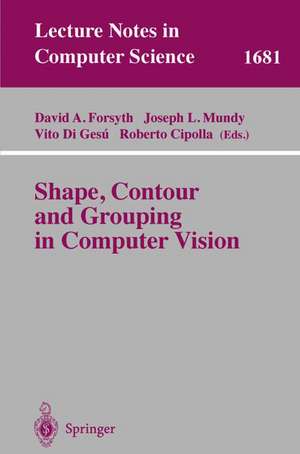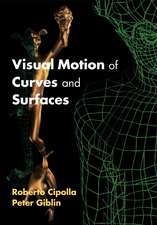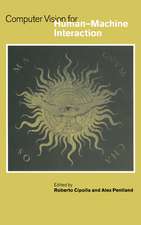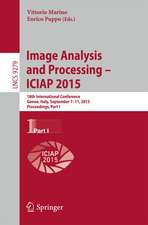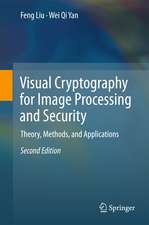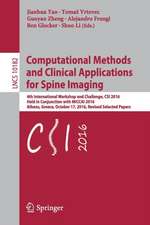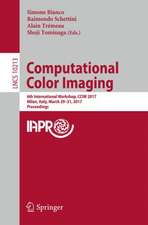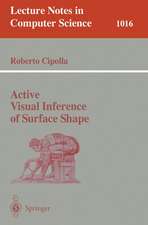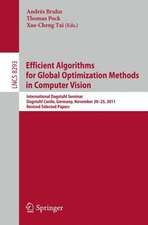Shape, Contour and Grouping in Computer Vision: Lecture Notes in Computer Science, cartea 1681
Editat de David A. Forsyth, Joseph L. Mundy, Vito Di Gesu, Roberto Cipollaen Limba Engleză Paperback – 3 noi 1999
Din seria Lecture Notes in Computer Science
- 20%
 Preț: 1061.55 lei
Preț: 1061.55 lei - 20%
 Preț: 307.71 lei
Preț: 307.71 lei - 20%
 Preț: 438.69 lei
Preț: 438.69 lei - 20%
 Preț: 579.30 lei
Preț: 579.30 lei -
 Preț: 410.88 lei
Preț: 410.88 lei - 17%
 Preț: 427.22 lei
Preț: 427.22 lei - 20%
 Preț: 596.46 lei
Preț: 596.46 lei - 15%
 Preț: 448.04 lei
Preț: 448.04 lei - 20%
 Preț: 353.50 lei
Preț: 353.50 lei -
 Preț: 389.49 lei
Preț: 389.49 lei - 20%
 Preț: 309.90 lei
Preț: 309.90 lei - 20%
 Preț: 645.28 lei
Preț: 645.28 lei - 20%
 Preț: 763.23 lei
Preț: 763.23 lei - 15%
 Preț: 580.46 lei
Preț: 580.46 lei - 20%
 Preț: 310.28 lei
Preț: 310.28 lei - 20%
 Preț: 655.02 lei
Preț: 655.02 lei - 20%
 Preț: 1183.14 lei
Preț: 1183.14 lei - 20%
 Preț: 340.32 lei
Preț: 340.32 lei -
 Preț: 449.57 lei
Preț: 449.57 lei - 20%
 Preț: 591.51 lei
Preț: 591.51 lei - 18%
 Preț: 938.83 lei
Preț: 938.83 lei - 20%
 Preț: 337.00 lei
Preț: 337.00 lei - 20%
 Preț: 649.50 lei
Preț: 649.50 lei - 20%
 Preț: 607.40 lei
Preț: 607.40 lei - 20%
 Preț: 1414.79 lei
Preț: 1414.79 lei - 20%
 Preț: 1024.44 lei
Preț: 1024.44 lei - 20%
 Preț: 583.40 lei
Preț: 583.40 lei - 20%
 Preț: 453.32 lei
Preț: 453.32 lei - 20%
 Preț: 575.49 lei
Preț: 575.49 lei - 20%
 Preț: 1075.26 lei
Preț: 1075.26 lei - 20%
 Preț: 585.88 lei
Preț: 585.88 lei - 20%
 Preț: 825.93 lei
Preț: 825.93 lei - 17%
 Preț: 360.20 lei
Preț: 360.20 lei - 20%
 Preț: 763.23 lei
Preț: 763.23 lei - 20%
 Preț: 340.32 lei
Preț: 340.32 lei - 20%
 Preț: 504.58 lei
Preț: 504.58 lei - 20%
 Preț: 369.13 lei
Preț: 369.13 lei - 20%
 Preț: 580.93 lei
Preț: 580.93 lei - 20%
 Preț: 343.62 lei
Preț: 343.62 lei - 20%
 Preț: 350.21 lei
Preț: 350.21 lei - 20%
 Preț: 583.40 lei
Preț: 583.40 lei - 20%
 Preț: 583.40 lei
Preț: 583.40 lei - 15%
 Preț: 438.59 lei
Preț: 438.59 lei - 20%
 Preț: 341.95 lei
Preț: 341.95 lei - 20%
 Preț: 238.01 lei
Preț: 238.01 lei - 20%
 Preț: 538.30 lei
Preț: 538.30 lei
Preț: 335.36 lei
Preț vechi: 419.20 lei
-20% Nou
Puncte Express: 503
Preț estimativ în valută:
64.19€ • 69.75$ • 53.96£
64.19€ • 69.75$ • 53.96£
Carte tipărită la comandă
Livrare economică 21 aprilie-05 mai
Preluare comenzi: 021 569.72.76
Specificații
ISBN-13: 9783540667223
ISBN-10: 3540667229
Pagini: 364
Ilustrații: VIII, 350 p.
Dimensiuni: 156 x 234 x 19 mm
Greutate: 0.5 kg
Ediția:1999
Editura: Springer Berlin, Heidelberg
Colecția Springer
Seria Lecture Notes in Computer Science
Locul publicării:Berlin, Heidelberg, Germany
ISBN-10: 3540667229
Pagini: 364
Ilustrații: VIII, 350 p.
Dimensiuni: 156 x 234 x 19 mm
Greutate: 0.5 kg
Ediția:1999
Editura: Springer Berlin, Heidelberg
Colecția Springer
Seria Lecture Notes in Computer Science
Locul publicării:Berlin, Heidelberg, Germany
Public țintă
ResearchCuprins
An Empirical-Statistical Agenda for Recognition.- A Formal-Physical Agenda for Recognition.- Shape.- Shape Models and Object Recognition.- Order Structure, Correspondence, and Shape Based Categories.- Quasi-Invariant Parameterisations and Their Applications in Computer Vision.- Shading.- Representations for Recognition Under Variable Illumination.- Shadows, Shading, and Projective Ambiguity.- Grouping.- Grouping in the Normalized Cut Framework.- Geometric Grouping of Repeated Elements within Images.- Constrained Symmetry for Change Detection.- Grouping Based on Coupled Diffusion Maps.- Representation and Recognition.- Integrating Geometric and Photometric Information for Image Retrieval.- Towards the Integration of Geometric and Appearance-Based Object Recognition.- Recognizing Objects Using Color-Annotated Adjacency Graphs.- A Cooperating Strategy for Objects Recognition.- Statistics, Learning and Recognition.- Model Selection for Two View Geometry:A Review.- Finding Objects by Grouping Primitives.- Object Recognition with Gradient-Based Learning.
